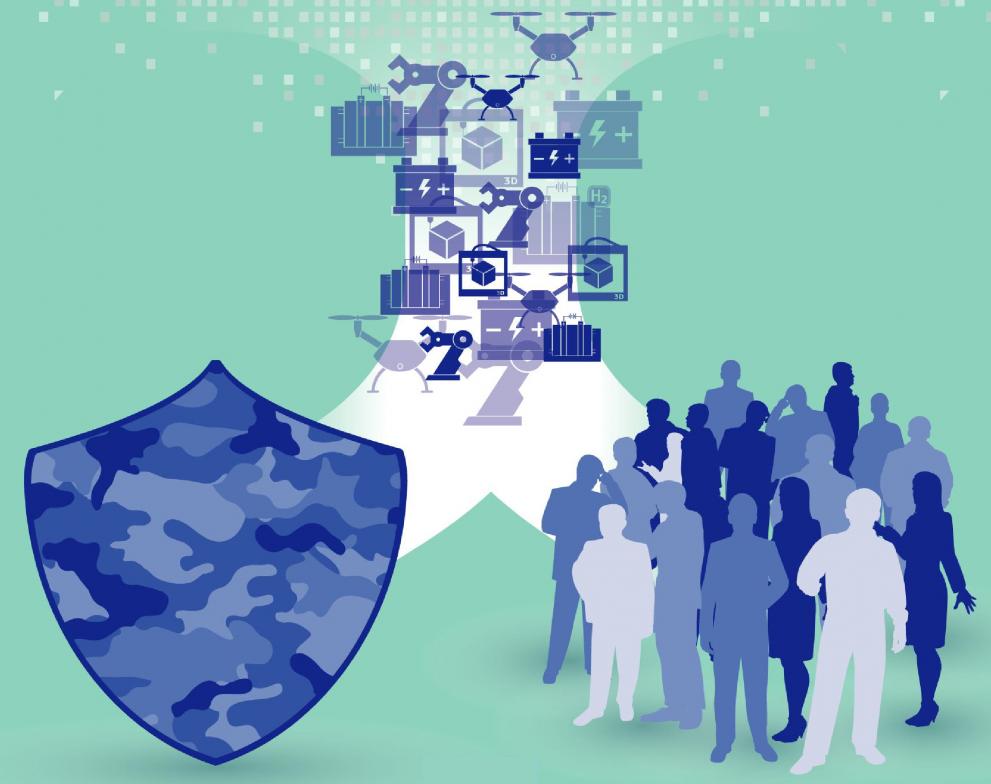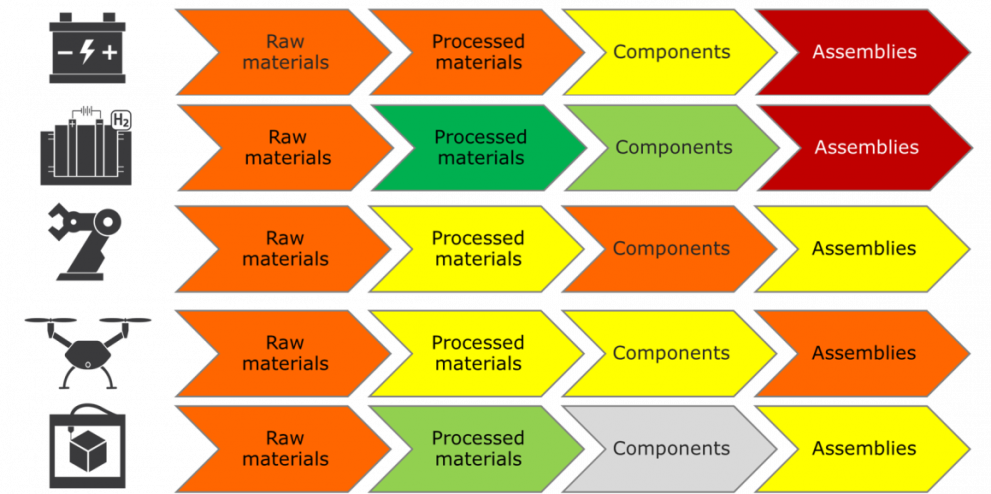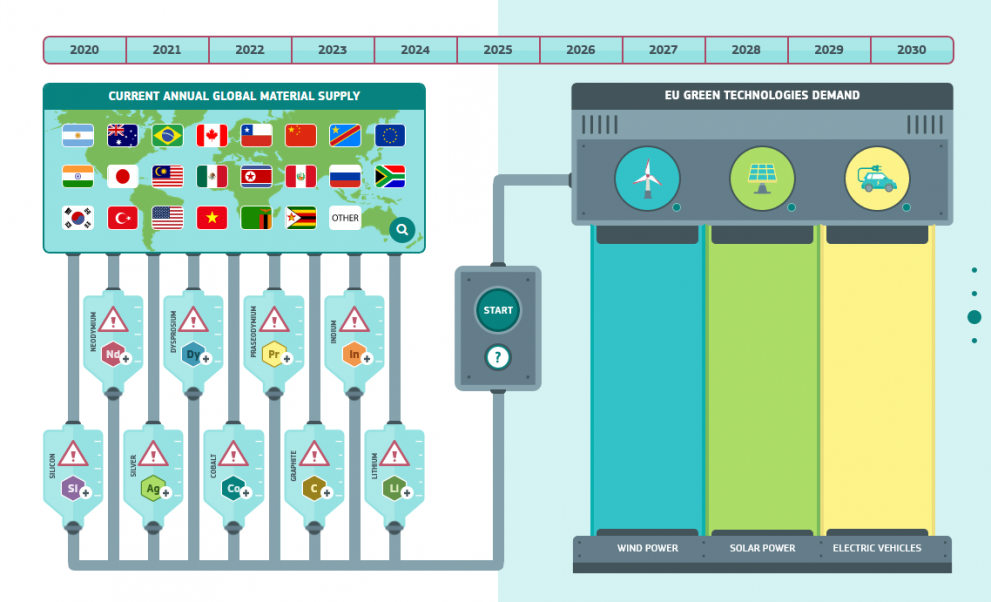
As experts meet for the European Commission’s annual raw materials week, a new JRC report calls for a wide range of actions to address bottlenecks in the supply of materials needed for the development of emerging technologies important to Europe’s defence and civil (dual-use) industries.
Experts focused on five dual-use technologies: advanced batteries, fuel cells, robotics, unmanned vehicles and 3D printing.
The study finds that Europe is extremely highly dependent on imports of critical raw materials for these technologies. Only 1% of the materials come from European countries.
Supply risks

The weakest step in the supply chain for the technologies under the spotlight is the supply of raw materials.
Europe is extremely highly dependent on imports for all five technologies, with only 1% (for 3D printing) to 5% (for fuel cells) of the raw materials coming from within Europe.
China dominates global production of these raw materials, followed by South-Africa, Russia and Brazil - except for Li-ion batteries, where Australia and Chile are the major suppliers after China.
The role of China as a key supplier along the supply chains is noteworthy.
China has acquired, and continues to expand its dominant position in the Li-ion battery and drones supply chains, and has ambitious plans in the fields of robotics, fuel cells and 3D printing.
Together, Li-ion batteries, fuel cells, robotics, unmanned vehicles and additive manufacturing rely on 23 Critical Raw Materials (CRMs).
The most used critical material in all five selected technologies is cobalt.
The major supplier of CRMs is China, with a share of almost 40%, followed by South Africa, Russia, Democratic Republic of Congo (DRC) and Brazil.
With the exception of Li-ion batteries, Europe is a strong supplier, globally, of the processed materials required for the five selected technologies.
In terms of components supply, with the exception of fuel cell technology, Europe’s domestic production of components is relatively low.
Europe produces, on average, around 12% of the components required in Li-ion batteries, fuel cells, robotics and drones.
Furthermore, the supply of assemblies appears to be very critical for three of the technologies - Li-ion batteries, fuel cells and drones.
Europe produces around:
- 0.2% of the assemblies for Li-ion batteries,
- 1% for fuel cells,
- 41% for robots,
- 9% for drones and
- 34% for 3D metal systems globally.
Mitigation measures/Policy recommendations
The report recommends that European policymakers introduce mitigation strategies across the whole supply chain as soon as possible.
More specifically, the study highlights the need for more effective action on (critical) raw materials in Europe.
Such actions could include supply diversification, increased recycling volumes and the substitution of critical materials.
In addition, stockpiling could be considered to secure access to strategic raw materials in the event of a crisis.
Tailored, competitive awards-based programmes could be initiated to encourage European companies, in particular small businesses to engage in European defence R&D with the potential for commercialisation also in the civil sector, i.e. high technology readiness level.
The report calls for support to increase manufacturing opportunities in Europe by creating an attractive investment environment for European companies.
The experts also highlight the importance of using synergies between the civil and defence sectors in order to increase interest in common research and investment opportunities.
For some technologies where the volumes for defence are small, such as Li-ion batteries and fuel cells, supporting these synergies is even more crucial.
Further key policy actions identified in the report include fostering international collaboration (e.g. for fuel cells); supporting standardisation activities (e.g. 3D printing, fuel cells, robotics and drones); and promoting cyber physical security of robotics systems (including unmanned vehicles).
Materials that are critical to our green future
In addition to emerging civil/military innovations, raw materials are critical to the production of the green energy and transport technologies that will help the EU achieve its climate goals.
However, supply of these materials may not be sufficient to meet the growing demand for these technologies in the near future.
During raw materials week, the JRC launched a new interactive tool that shows which materials we rely on, where we get them from and when demand is likely to outstrip supply - like the rare earth metal dysprosium, that’s used for the magnets in wind turbines; or cobalt, a key element in lithium-ion car batteries.

The tool also gives information on tactics the EU can employ to mitigate the danger of critical materials – diversifying supply, supporting EU production, researching substitutes and promoting recycling.
Related Content
JRC report: Materials dependencies for dual-use technologies relevant to Europe's defence sector
Details
- Publication date
- 20 November 2019
